Controlling Humidity in Natatoriums
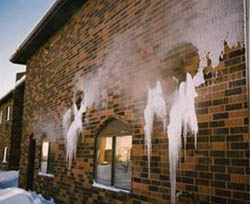 Ignorance is bliss—until it bites! Your indoor pool is a stewing cauldron of corrosion and structural damage, mold and mildew growing in seen and unseen places, even HVAC equipment failure waiting to rob your wallet unless that humidity is effectively controlled. But there is hope. The ill conceived practices of years gone by has been remedied if you know where to look. Effective humidity control in your pool room begins at the planning and design stage. That’s what we’re here to help you achieve.
Ignorance is bliss—until it bites! Your indoor pool is a stewing cauldron of corrosion and structural damage, mold and mildew growing in seen and unseen places, even HVAC equipment failure waiting to rob your wallet unless that humidity is effectively controlled. But there is hope. The ill conceived practices of years gone by has been remedied if you know where to look. Effective humidity control in your pool room begins at the planning and design stage. That’s what we’re here to help you achieve.
More about Controlling Humidity in Natatoriums…
Preventing Condensation
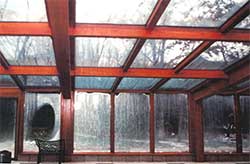 Preventing condensation is perhaps the most important purpose of all for dehumidifying an indoor pool enclosure. If condensation forms in or on wood, plaster, or other porous materials, it can cause warping, rot, mold, mildew, rust or simply saturate the material until it loses its integrity.
Preventing condensation is perhaps the most important purpose of all for dehumidifying an indoor pool enclosure. If condensation forms in or on wood, plaster, or other porous materials, it can cause warping, rot, mold, mildew, rust or simply saturate the material until it loses its integrity.
More about Preventing Condensation…
Dew Point Temperature
As you cool air, it cannot hold the same amount of moisture. At some point, that air will become saturated and moisture will begin to condense out of the air onto any adjacent surface.
More about Dew Point Temperature…
Designing a Clean, Healthy, Stable Environment
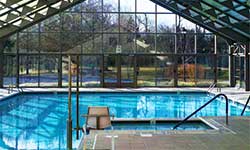 At Veri-Dry, we believe a successful project starts with good design. The objective for designing mechanical air handling systems for pools is to ensure that no surface within the pool enclosure or within the structural members of the building will reach “Dew Point” and cause moisture to condense. The DXair Dehumidifier helps to accomplish this objective by reducing the relative humidity in the pool enclosure and therefore, effectively reducing the dew point temperature.
At Veri-Dry, we believe a successful project starts with good design. The objective for designing mechanical air handling systems for pools is to ensure that no surface within the pool enclosure or within the structural members of the building will reach “Dew Point” and cause moisture to condense. The DXair Dehumidifier helps to accomplish this objective by reducing the relative humidity in the pool enclosure and therefore, effectively reducing the dew point temperature.
More about Designing a Clean, Healthy, Stable Environment…
Designing and Engineering Pool Room Dehumidification Systems
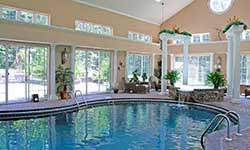 Sizing of all dehumidification systems is based on the basic following information. It is important to understand the geographics and demographics for your pool temperatures/conditions. Warmer climates will have a greater cooling load, especially if bringing in large amounts of outside air. Colder climates will have a higher heating load. It is also important to understand the building materials required for maximum protection and prevention of condensation.
Sizing of all dehumidification systems is based on the basic following information. It is important to understand the geographics and demographics for your pool temperatures/conditions. Warmer climates will have a greater cooling load, especially if bringing in large amounts of outside air. Colder climates will have a higher heating load. It is also important to understand the building materials required for maximum protection and prevention of condensation.
More about Designing and Engineering Pool Room Dehumidification Systems…
Frequently Asked Dehumidification Questions
Why is a dehumidification system necessary to control humidity in an indoor pool/natatorium?
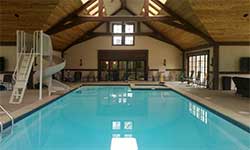 Indoor pools and spas, due to the nature of containing a large body of water, have a much higher humidity level than any other area of commercial or residential buildings. As this moisture reaches a 100% humidity saturation level within the pool room, humidity and moisture—if not controlled—are destructive to dry wall, wood, metal, insulation, interior structural members, and equipment. Additionally, this can foster an uncomfortable and unhealthy environment for all. A properly designed indoor pool dehumidification system will prevent the early deterioration of the structure by reducing the pool room humidity levels to the standards required by ASHRAE. While dehumidifying the indoor pool room environment, the system will also provide the necessary heating, cooling and additional free heat resources to the natatorium.
Indoor pools and spas, due to the nature of containing a large body of water, have a much higher humidity level than any other area of commercial or residential buildings. As this moisture reaches a 100% humidity saturation level within the pool room, humidity and moisture—if not controlled—are destructive to dry wall, wood, metal, insulation, interior structural members, and equipment. Additionally, this can foster an uncomfortable and unhealthy environment for all. A properly designed indoor pool dehumidification system will prevent the early deterioration of the structure by reducing the pool room humidity levels to the standards required by ASHRAE. While dehumidifying the indoor pool room environment, the system will also provide the necessary heating, cooling and additional free heat resources to the natatorium.
More Frequently Asked Dehumidification Questions…
Common Mistakes When Building An Indoor Swimming Pool
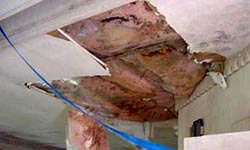 “It’s Just Another Room”
“It’s Just Another Room”
Quite often, pool room dehumidification systems are an “afterthought”. Structures are completed without consideration for controlling humidity, ductwork systems, vapor barrier, negative pressure, and mechanical space to name a few. The cost of preventing problems in the design stage is much less than the repair costs down the road.
More about Common Mistakes When Building An Indoor Swimming Pool…
Design Guideline Bulletins
 The Design Guidelines are in PDF format, are printable and can be shared with all involved in your project. This information has been gathered over the years from a variety of resources, building professionals, pool contractors, architects, engineers, mechanical contractors, ASHRAE, ACCA, and is not expressly the opinion of Veri-Dry, LLC. Providing of these guidelines does not negate your own research into building materials and preventive measures for your indoor pools; they are provided as an additional resource to ongoing research.
The Design Guidelines are in PDF format, are printable and can be shared with all involved in your project. This information has been gathered over the years from a variety of resources, building professionals, pool contractors, architects, engineers, mechanical contractors, ASHRAE, ACCA, and is not expressly the opinion of Veri-Dry, LLC. Providing of these guidelines does not negate your own research into building materials and preventive measures for your indoor pools; they are provided as an additional resource to ongoing research.
